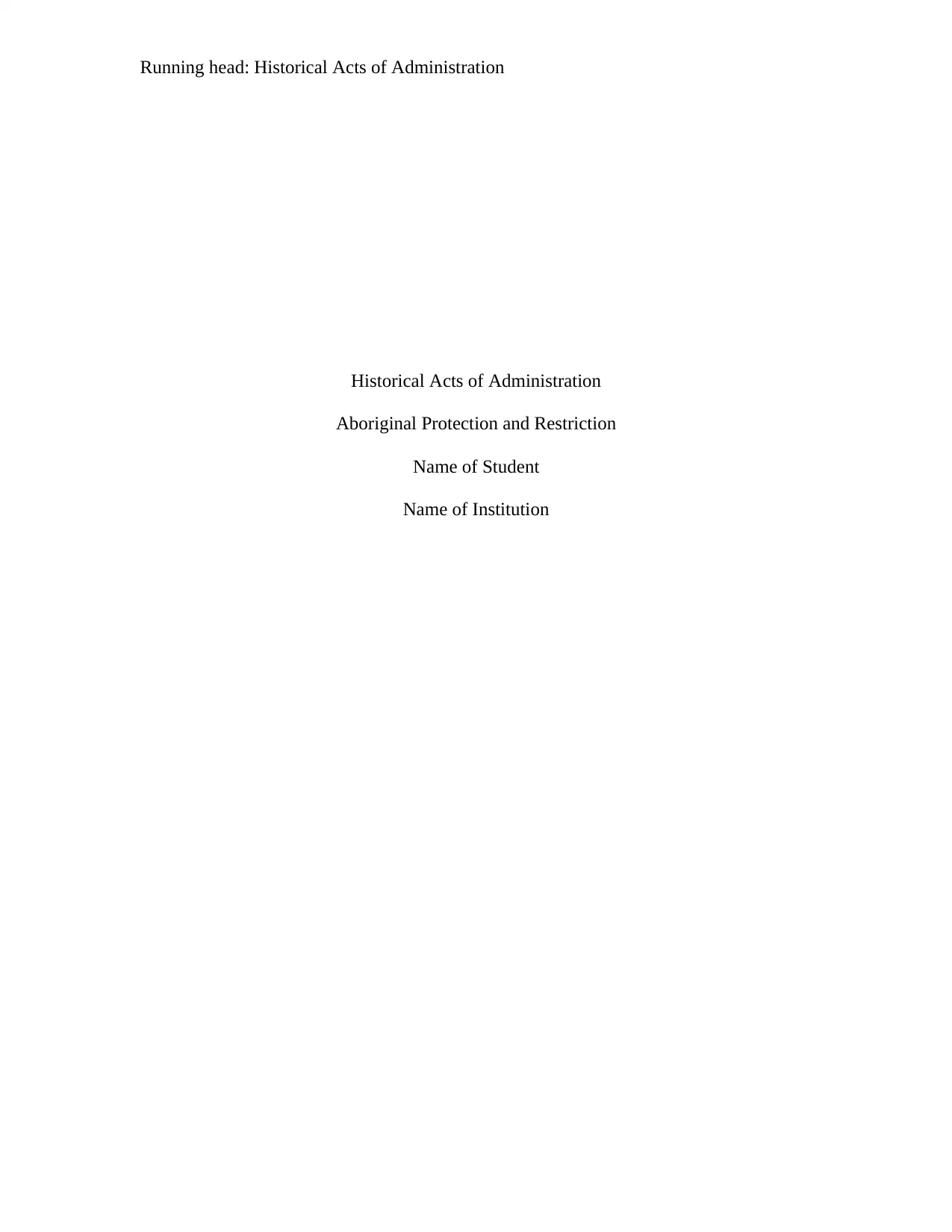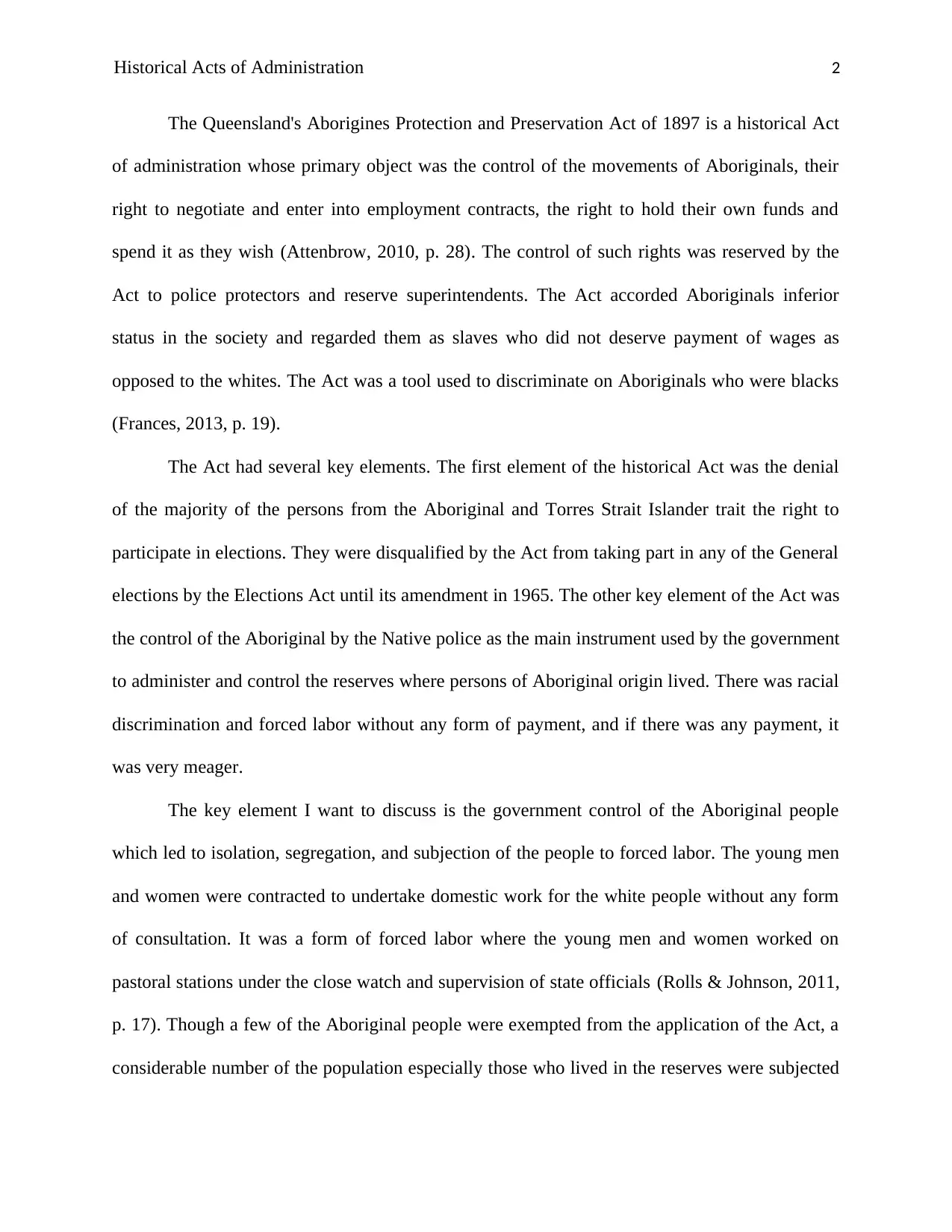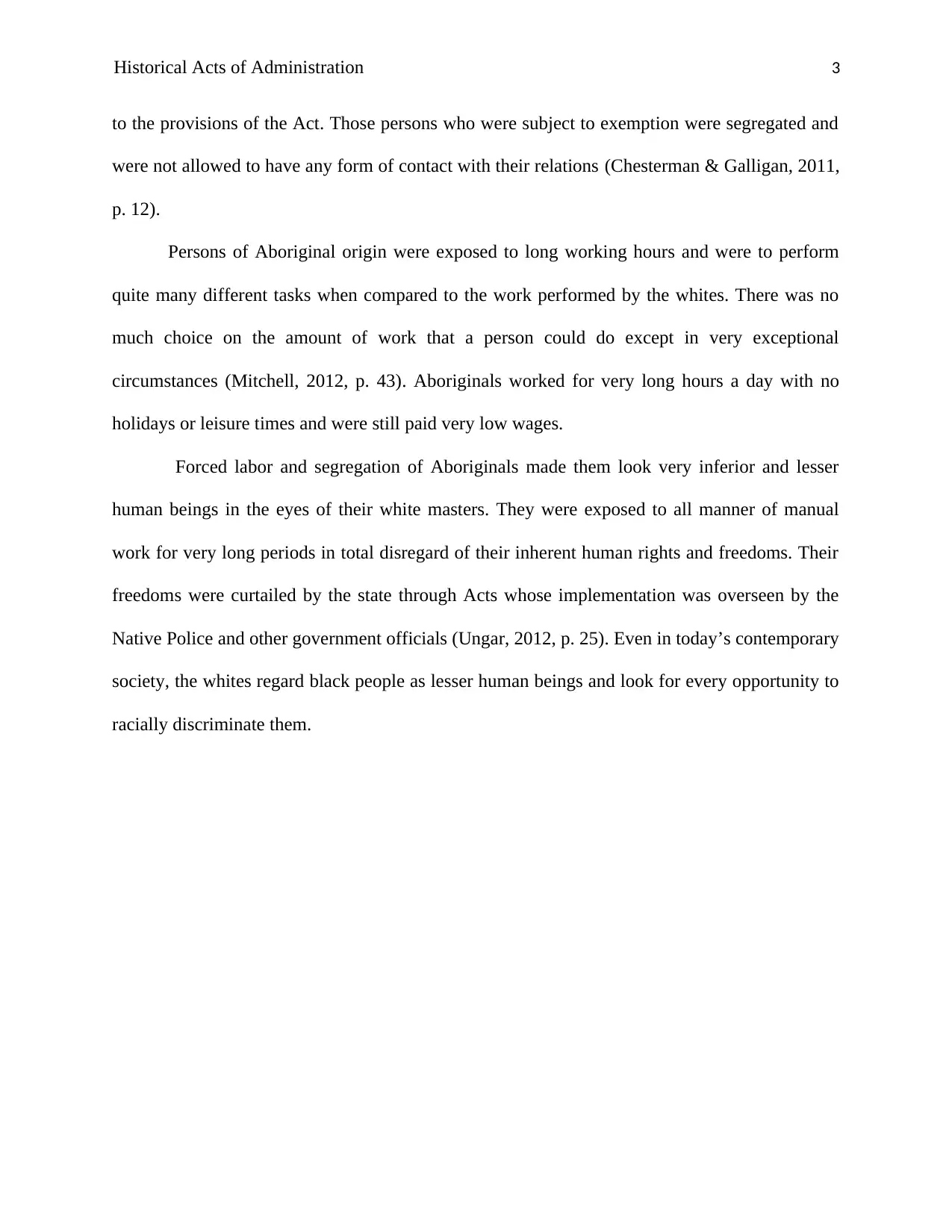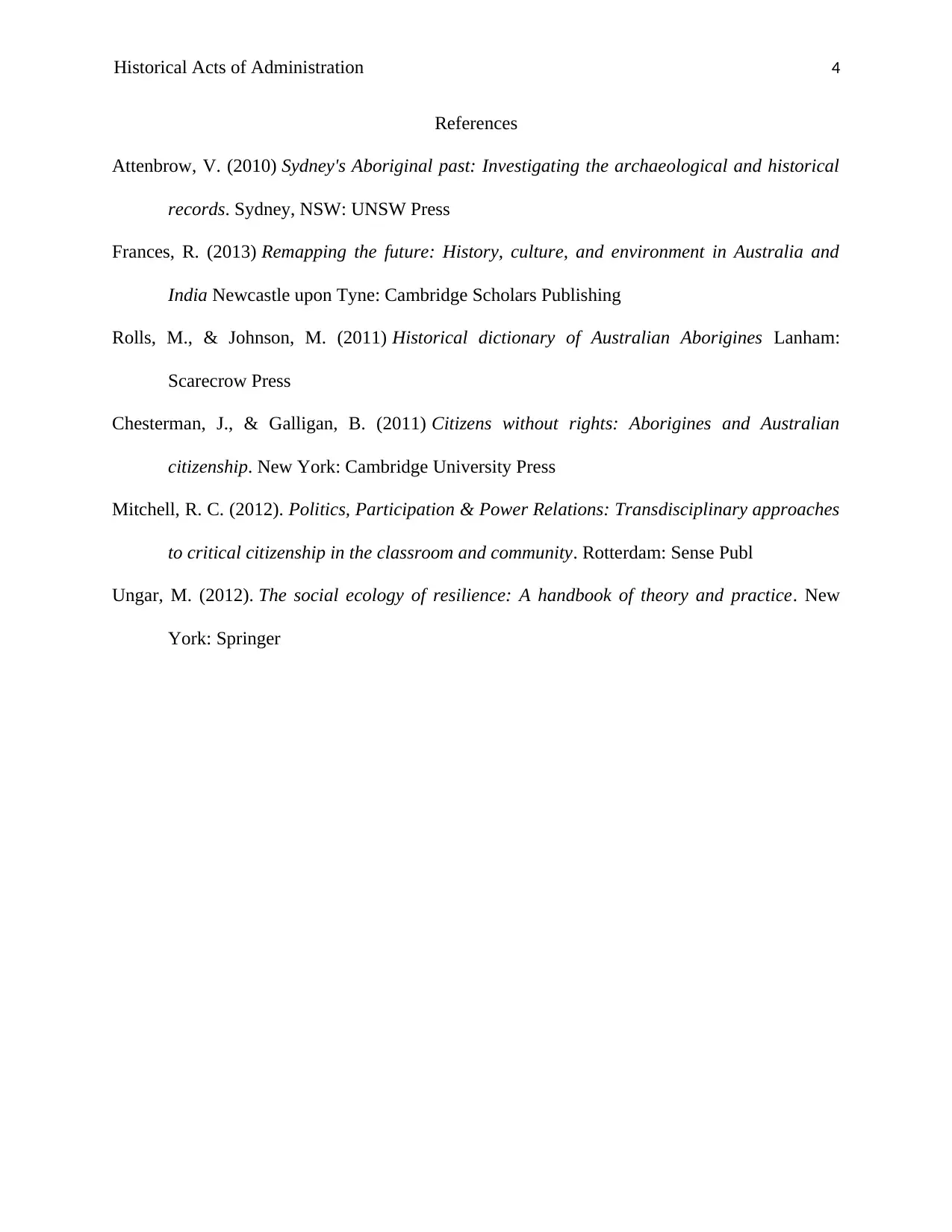Historical Acts of Administration: Aboriginal Protection and Control
VerifiedAdded on 2020/04/01
|4
|774
|91
Essay
AI Summary
This essay examines the Queensland Aborigines Protection and Preservation Act of 1897, a historical act of administration that controlled the movements, employment, and finances of Aboriginal people. The act, enforced by police protectors and reserve superintendents, is criticized for its discriminatory practices, which included denying Aboriginals the right to vote and subjecting them to forced labor. The essay focuses on the government's control over Aboriginal people, leading to their isolation, segregation, and exploitation, particularly in the form of contracted domestic work. This practice, often involving long hours and low wages, is highlighted as a violation of human rights, reflecting a broader pattern of racial discrimination. The essay references key elements of the act, such as denial of voting rights and control by the Native Police. It draws parallels to contemporary societal biases, emphasizing the lasting impact of these historical injustices.
1 out of 4





![[object Object]](/_next/static/media/star-bottom.7253800d.svg)